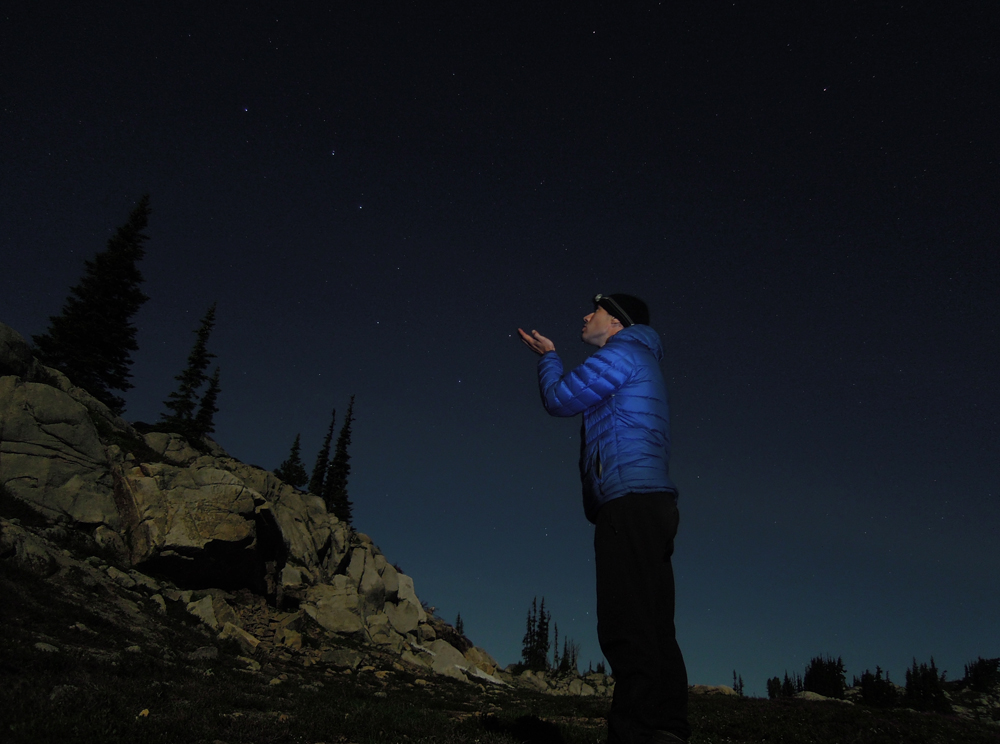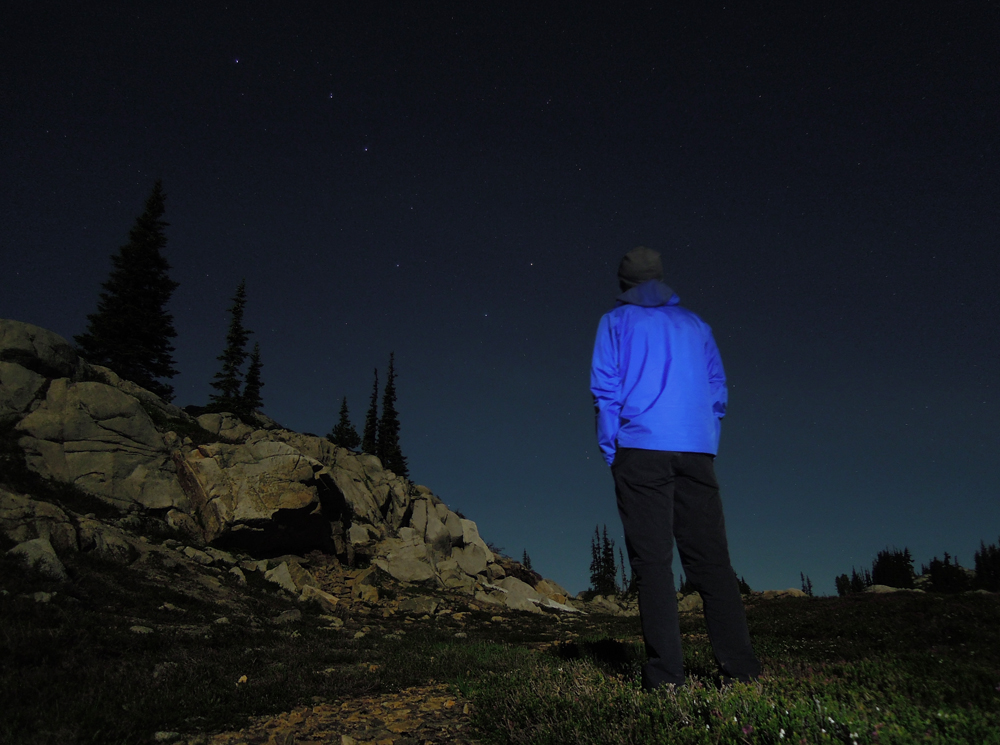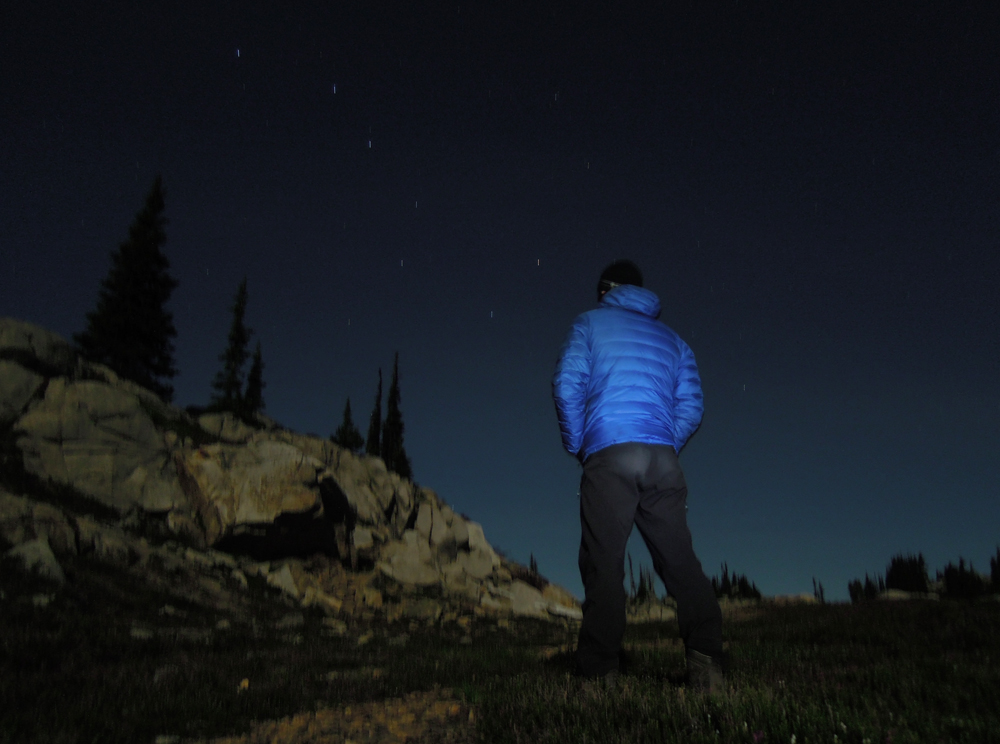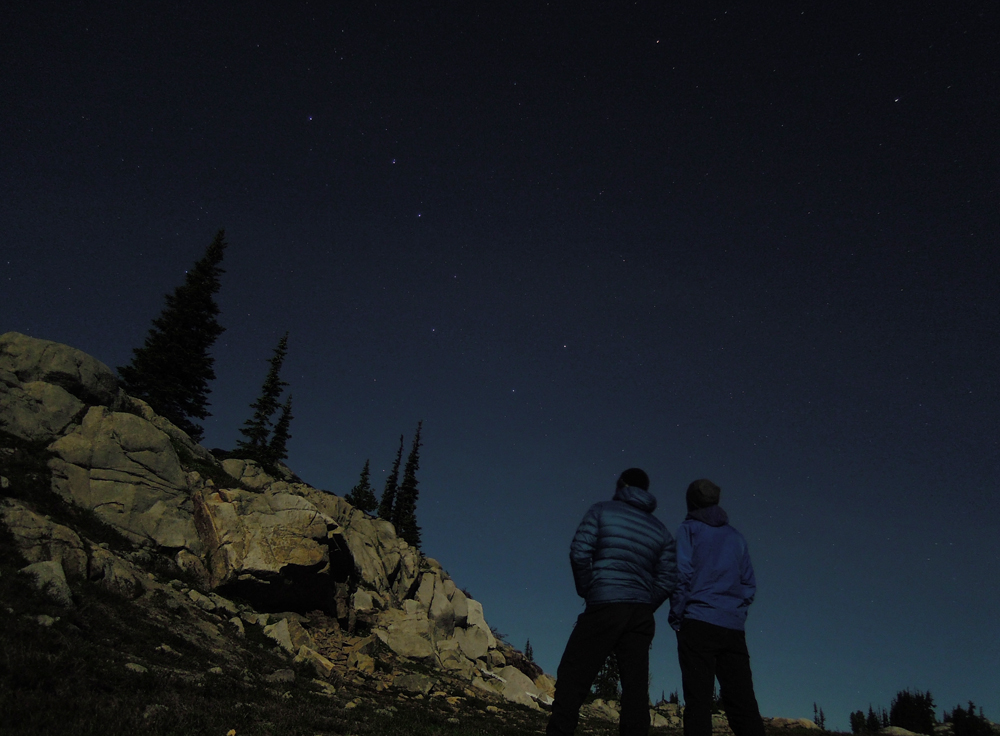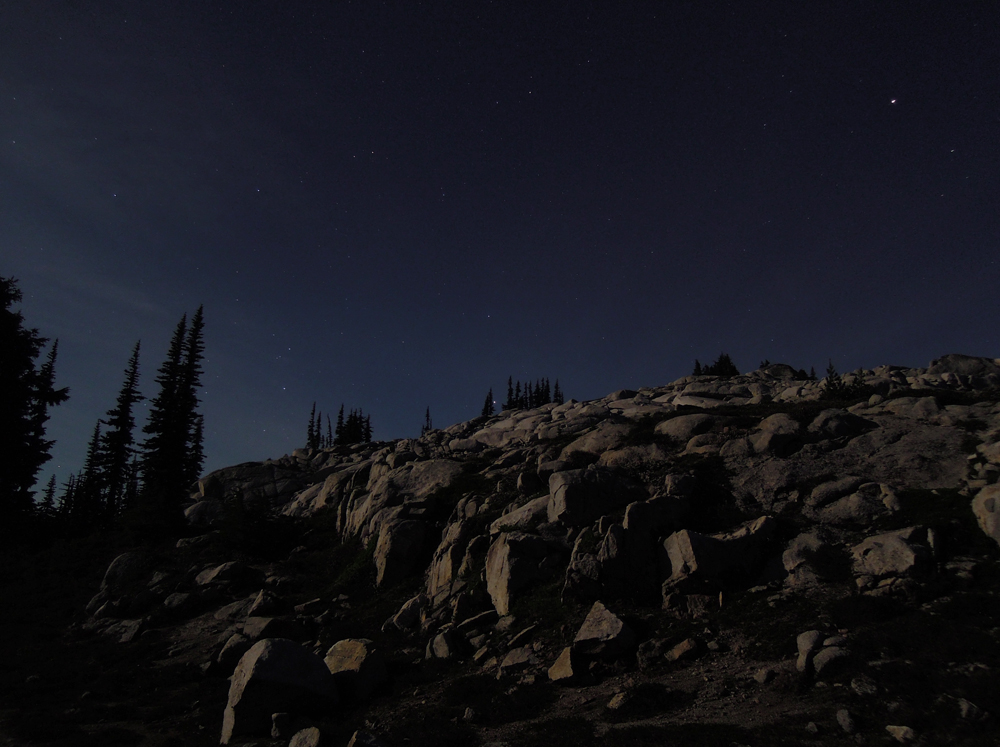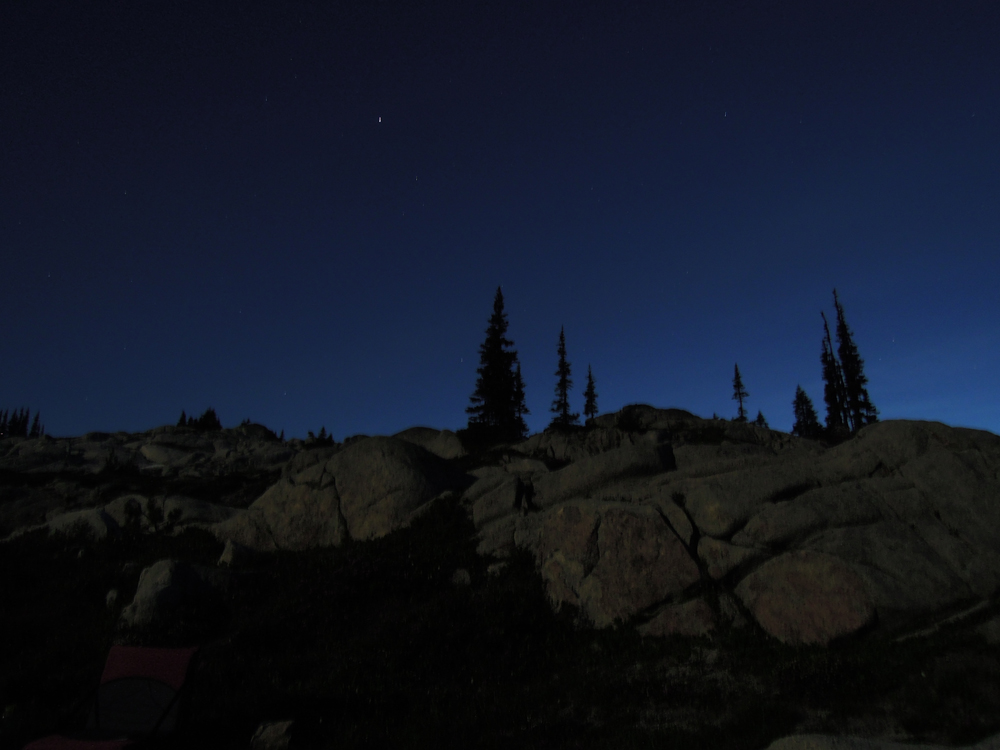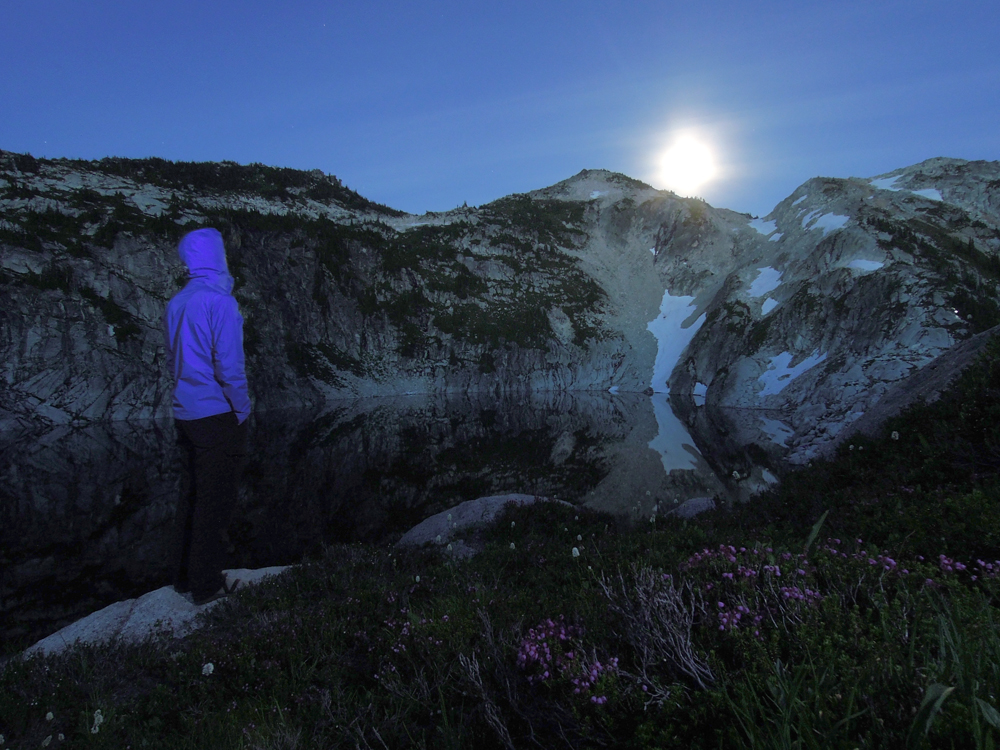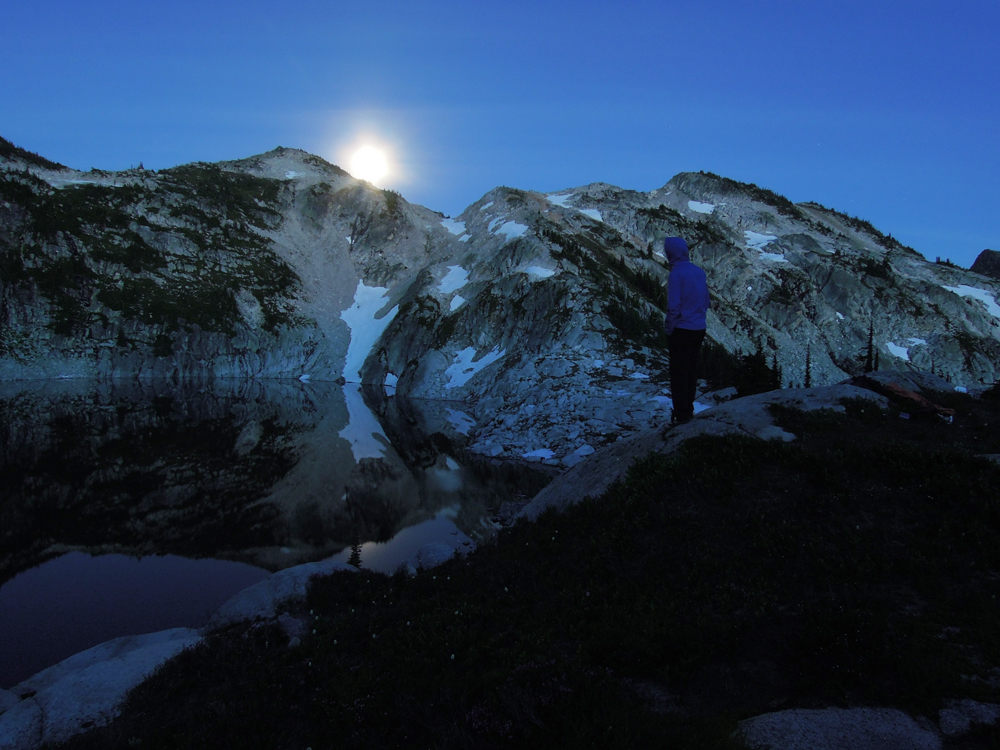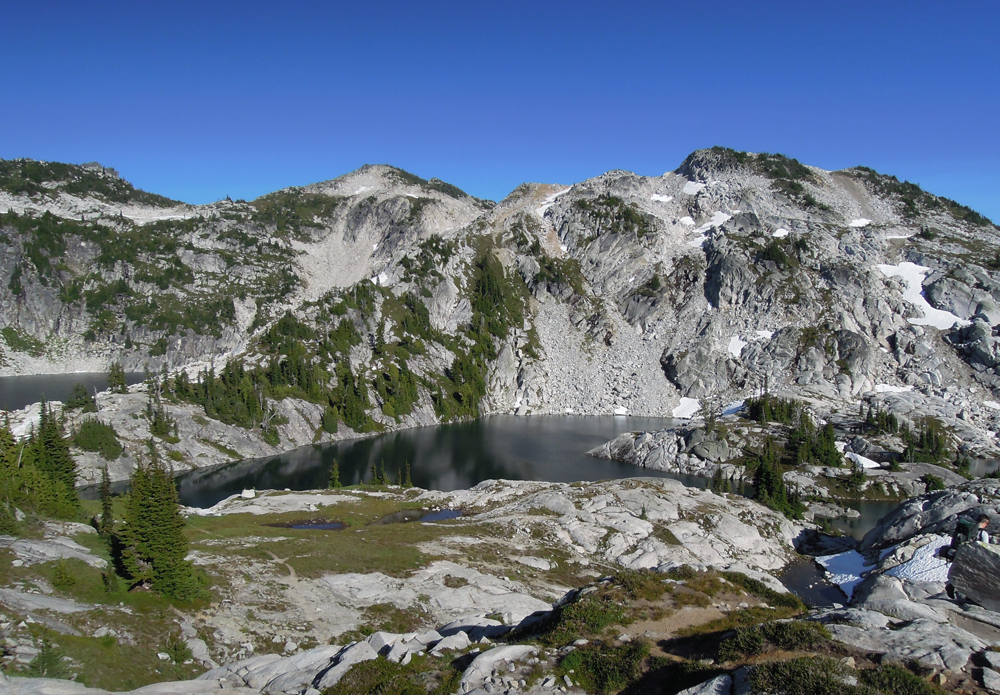It was our first backpacking trip of the year, and we knew there would be a few cobwebs: an obese backpack, forgotten necessities, atrophied quads, and sore heels. It was already late in the season: the first weekend of August. A social get-together with some out-of-town friends on Friday night compressed our timeline to just one night. Our cohort recommended Tuck and Robin Lakes as a good maiden voyage—“nice and flat for a few miles then straight up, about six miles one way.”

Following an, ahem, late departure from Seattle Saturday morning, we headed east on I-90, getting off in Roslyn, and then passing Ronald and Salmon La-Sac before driving ten miles of dusty road to the trailhead. We were on the trail by noon.
We were already well-committed to our route by the time we stopped to eat lunch on the edge of Hyas Lake, which is when we finally referenced our map. We found that our cohort had misremembered the mileage since his first trip to this location three years prior … by about two miles. It doesn’t seem like much, but when it includes 2,900 feet of elevation gain, that discrepancy suddenly becomes more relevant.
Three hours later, our legs demanded we stop to set up camp at Tuck Lake, but we drove on, arriving at Robin Lake at 6:00PM as the sun was beginning to tease the glacier-laden peak across the valley.
It was clear that it was worth the effort. Our shoulders, backs, and quads were excited that we had stopped to set up camp. And so were the mosquitos. They weren’t the most numerous I’d ever seen, but they were apparently famished. I wore my light Patagonia rain jacket to keep them from biting through my clothes. Unfortunately, they found my ears before I thought to extend the hood of my jacket; their anticoagulant saliva made quick work of my ears, rendering them the size and texture of thin, taught sausages.
We eagerly anticipated the Perseids meteor shower, but it became clear that the “Super Moon” – the biggest moon of the year – would steal the show as it rose behind Robin Lake. I set up my small Nikon point-and-shoot (P300) on a small tripod and set the shutter speed to eight seconds—the lowest setting. My hiking mates provided accent lighting by swiping with a small headlight a couple times. In one series, both Mark and myself are looking out over Robin Lakes from our camp; the other, we are facing west towards the Little Dipper. I wish I’d brought my DSLR and proper tripod, but my legs hated me for even considering the extra weight. The stars were beautiful, unlike the constellation of mosquito bites on my forehead.
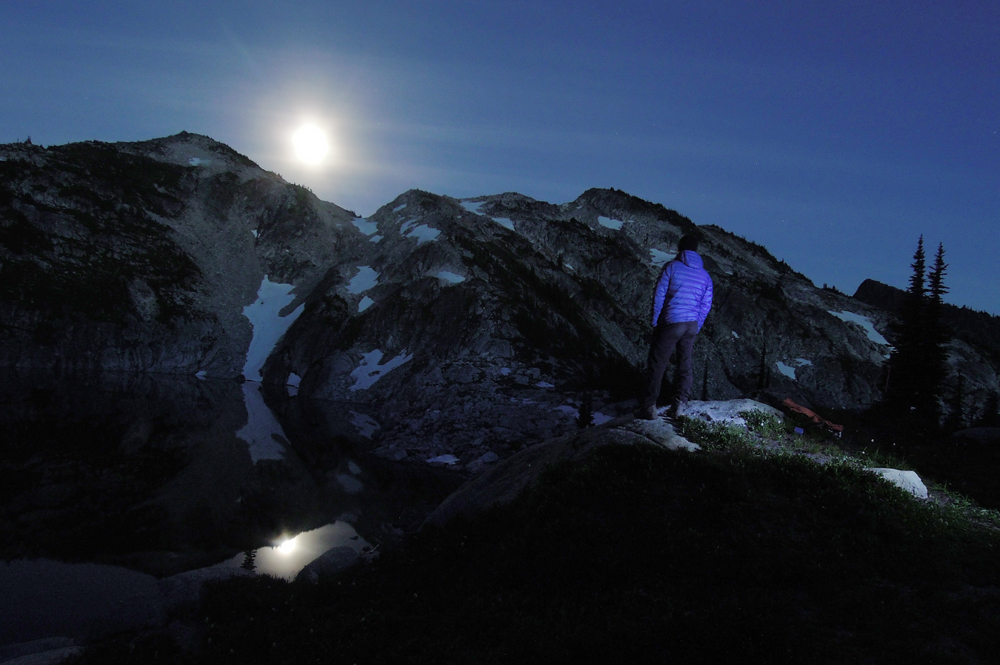
The following morning, I got up just before the sun hit our tent. It was clearly going to be a very warm day. I thought this alpine habitat would be good for White-tailed Ptarmigan, a long-time nemesis bird for me. I scoured the surrounding hills with sleepy eyes, failing to find more than American Pipit and Pine Siskin. A threesome of Clark’s Nutcrackers noisily picked at the cones of a Whitebark Pine, a tree whose dispersal relies mostly on this seed-loving, caching bird. Their mature tree was in the middle of a small alpine meadow; five smaller saplings in the immediate vicinity marked forgotten cache sites from years past.

Moving west, I scrambled up a hard snowbank and looked across the valley to the glacier-capped peak of Mount Daniel. A brownish haze hung in the air, a reminder that Washington State was suffering from the worst forest fires in its history. As we’d find out hours later, this smoke was from a brand-new fire near Interstate 90 twenty-five miles south.
I took a circuitous route back to our tents, scanning every inch of rock and meadow. No ptarmigan. We ate a quick breakfast, emphatically slapped away the encroaching insects, packed up our tents and – sixteen hours after our arrival – started the five-hour hike back to the car. A pair of Red Crossbills and a small pack of Mountain Goats oversaw our departure.
Being August, the birds were mostly quiet. But as we descended into the forest, I heard Olive-sided Flycatcher, Cassin’s Vireo, Red-breasted Nuthatch, Western Tanager, and (the sound of) a displaying male Sooty/Dusky Grouse. The calls of Golden-crowned Kinglets emanated from the canopy like delicate wind chimes at every bend. Singing Brown Creepers welcomed our appreciative knees to the base of the mountain. At Hyas Lake in the bottom of the valley, I found female Common Merganser, Barrow’s Goldeneye, and Mallard. Only several hundred yards from the trailhead, some pishing brought forth a vibrant flock of Nashville, Yellow-rumped, Townsend’s, Black-throated Gray, and Orange-crowned Warblers mixed with Chipping Sparrows and Red-breasted Nuthatches. An unseen Pileated Woodpecker drummed nearby.
By the time I reached the car, my legs were spent and the arches of my feet were in pain. But a dip in the Cle Elum River and a burger in Roslyn made me feel a hell of a lot better.
